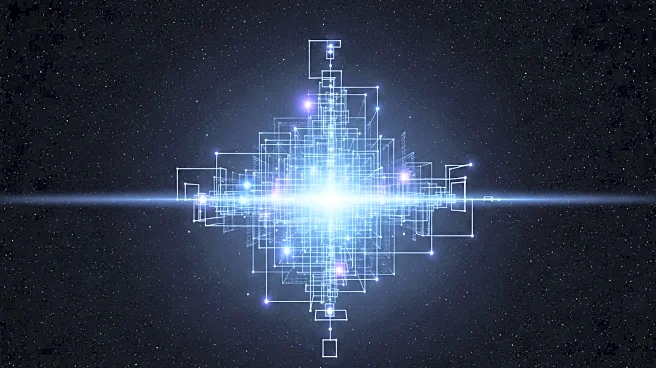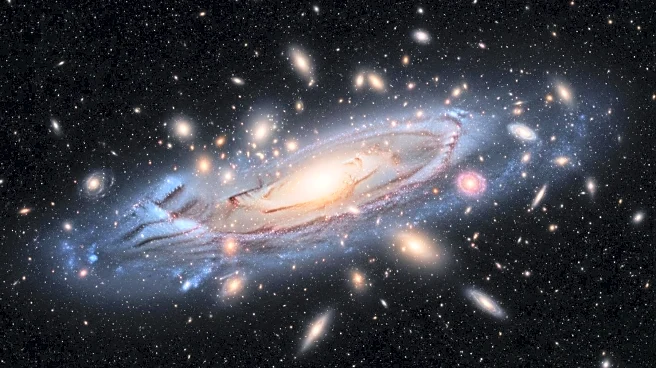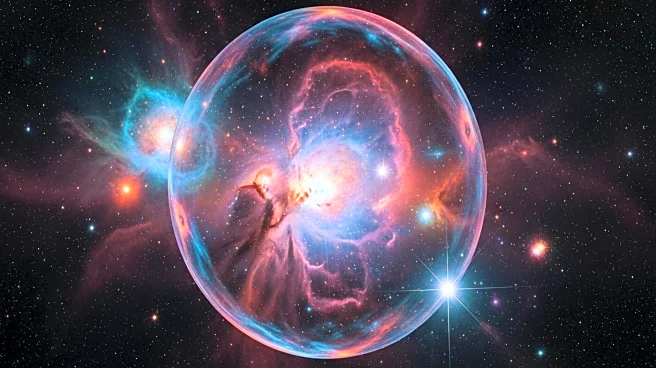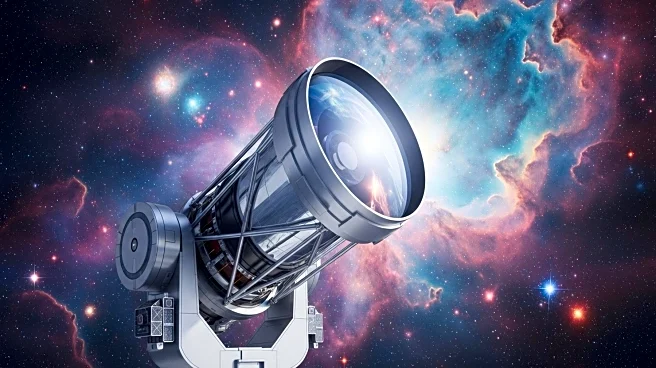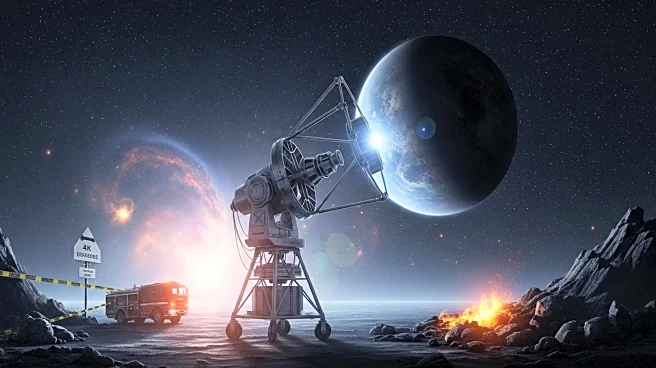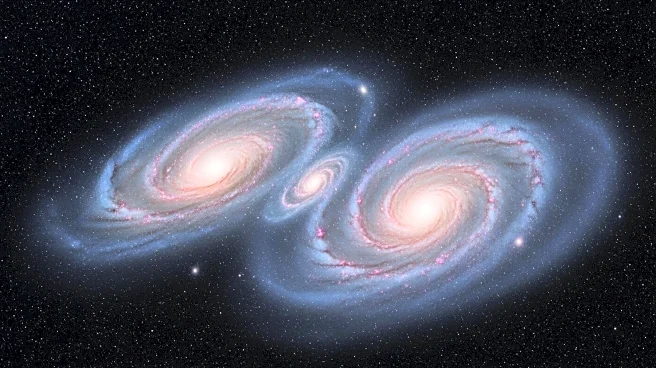What's Happening?
Johns Hopkins University researchers have developed a new algorithm, ImageMM, that enhances images from ground-based telescopes by removing atmospheric interference. This advancement allows Earth-based telescopes to produce images comparable to those taken from space, improving the clarity and depth of astronomical observations. The algorithm models how light travels through the atmosphere, correcting distortions caused by temperature and pressure variations.
Why It's Important?
The ImageMM algorithm represents a significant advancement in astronomical imaging, potentially revolutionizing cosmology research by enabling clearer observations of distant cosmic elements. This could lead to new discoveries about the universe's origins and structure, enhancing the capabilities of ground-based observatories and reducing reliance on space telescopes.
What's Next?
The algorithm is being tailored for use with the upcoming Vera C. Rubin Observatory, which will conduct extensive sky surveys to study dark energy and dark matter. This could provide valuable data for understanding these mysterious cosmic components and their effects on the universe's expansion.
Beyond the Headlines
Improving ground-based telescope imaging can democratize access to high-quality astronomical data, allowing more institutions to participate in cutting-edge research. This could lead to broader collaboration and innovation in the field of astronomy.

